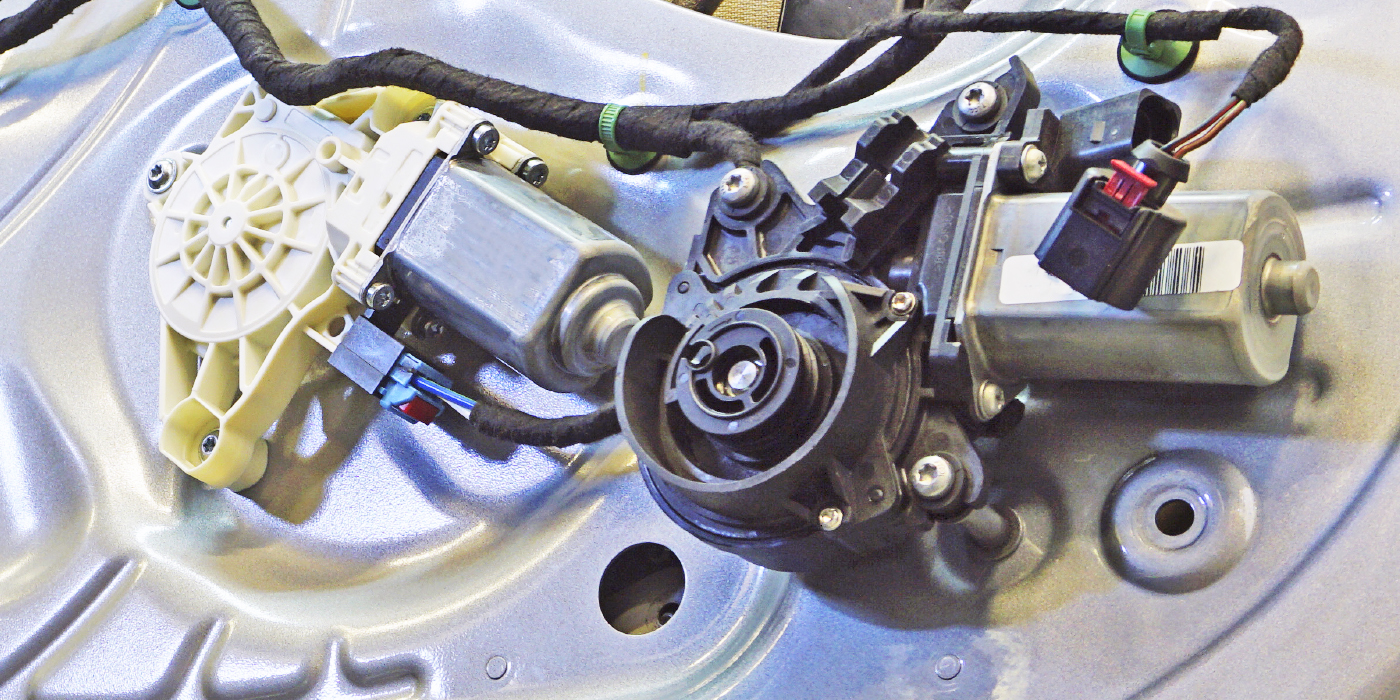By Michael Skurich
Lead Engineer, Sport Performance Tires, for Goodyear Tire & Rubber Co.
 A vehicle’s handling, stopping power, ride comfort, and rain and snow performance are balanced through a complex mix of design and materials in a tire. Reducing rolling resistance, however, can cause some of those tire characteristics to change.
A vehicle’s handling, stopping power, ride comfort, and rain and snow performance are balanced through a complex mix of design and materials in a tire. Reducing rolling resistance, however, can cause some of those tire characteristics to change.
Tire rolling resistance is simply the force a tire must overcome to roll. A car’s engine has to burn fuel to overcome this force to move. The less rolling resistance, the less fuel an engine burns to make the tire go around.
In essence, reduced rolling resistance is a goal for those who want to achieve an improvement in fuel efficiency.
Once the tire is rolling, however, the rubber compound in a tire exhibits something called hysteresis. Hysteresis is the main cause of energy loss associated with rolling resistance, and is attributed to the viscoelastic characteristics of the rubber.
As the tire rotates under the weight of the vehicle, it experiences repeated cycles of deformation and recovery, and it dissipates the hysteresis energy loss as heat.
There are several factors that can affect a tire’s rolling resistance:
• Temperature: The higher the ambient temperature, the lower the rolling resistance. This is not only due to the change in behavior of the tire’s materials, but also due to the internal air temperature increase and thus pressure increase.
• Load: As the load decreases, so does rolling resistance (near proportional). As load decreases, so will the deformation/deflection of the tire; less deformation means less energy loss.
• Inflation Pressure: As pressure increases, rolling resistance decreases. This is attributed to less deformation and bending in the tire due to the increase in pneumatic stiffness. However, the relationship is not linear. In the typical operating inflation pressure range, an increase of inflation of 1 psi will improve rolling resistance approximately 1.5%-2%. Conversely, low inflation will cause excessive deformation and increased rolling resistance.
There are also factors, such as driving style, that affect rolling resistance:
• Speed: As speed increases, rolling resistance increases. The effect is minimal up to typical highway speeds, however rolling resistance rapidly increases above those speeds.
• Torque: Under high torque conditions and hard acceleration/deceleration, rolling resistance increases, due to the increase in frictional energy dissipation. Tire deformation is also increased as the vehicle load is transferred.
• Slip/Steer Angle: The higher the angle or the harder the cornering, rolling resistance increases, similar to torque. The minimum occurs at zero lateral force.
There are also vehicle and tire influences that affect rolling resistance:
• Wheel Width: The size and width of the wheel can affect rolling resistance. An example would be as wheel width changes, so will the structural and pneumatic stiffness of the tire, thus changing tire deformation.
• Vehicle Alignment: A misaligned or aggressively aligned vehicle can affect the way the tire scrubs and deforms as it rotates, which will ultimately affect how much or how little energy is lost. Toe influence is greater than camber influence.
• Amount of Tire Wear: As a tire wears, rolling resistance decreases. Hysteretic material in the largest area of contribution (the tread) is worn away, the tread and blocks stiffen as their height decreases, and weight is lowered – all of which reduce deformation and lessen the impact of overcoming rotation. Depending on the type of tire, rolling resistance can be reduced nearly 20% or more in a tire that is fully worn (2/32-inch remaining tread depth).
Reducing Rolling Resistance
The challenge in reducing rolling resistance is being able to simultaneously maintain (or improve) other tire performances at the same time. Any change to the tire in terms of its shape/size, material composition, internal construction and its tread pattern to improve rolling resistance can affect other areas of tire performance, such as handling, tire wear and traction.
Knowing how the tire’s shape, material, construction and tread pattern all work together is essential in improving tire rolling resistance and balancing overall performance. Advancements in finite element analysis (computer modeling/predictive simulation), combined with growing fundamental knowledge, is driving tire optimization for low rolling resistance.
How the tire’s shape and size is defined will affect its pneumatic stiffness, structural stiffness and weight. Since all three influence tire rolling resistance, namely the deformation and amount of deformable material in the tire, the impact of tire shape is significant.
The key is finding the right balance of these to minimize rolling resistance, and still achieve the other tire performances. This is accomplished by manipulating and controlling tire shape, both statically and dynamically.
One critical aspect of tire shape is how it is managed to create the preferred tire footprint. The footprint will affect every aspect of tire performance, and is therefore optimized to reduce rolling resistance. The shape of the tire lays the foundation for the integration with the remaining parts of the tire. The shape of the tire can also impact a vehicle’s aerodynamic performance, and ultimately fuel economy, by reducing or increasing drag.
Internal Composition
As discussed with the tire’s shape, controlling the footprint and the way the tire deforms is important, and the construction of the tire provides the reinforcement to maintain that desired shape, so it can be used to improve rolling resistance.
In changing the tire’s internal components, it is desirable to properly locate the material in order to achieve the needed tire performance and to control deformation, but also to place and select the material where its hysteretic properties have minimal impact and can be used to lower tire energy loss.
Choosing the right construction by way of gauges, endings, angles of components, number of components, material, etc., can also benefit for lower rolling resistance. Too much or too little of any component in the tire’s construction may affect its ability to dissipate energy efficiently, and can add weight or even take away weight to combat deformation.
Because a tire’s footprint is so critical to performance, and the tire tread can typically account for up to 60% of the tire’s overall contribution to rolling resistance, how the tread pattern interacts with the tread compound, and how it affects the footprint, can be designed to lower rolling resistance.
By adjusting the geometry and block orientation of tread elements, as well as location of grooves and blading, these manipulations can reduce bending and deformation, or affect friction and energy loss through stiffness control.
Ensuring the pattern is designed with the tire shape, construction, and compounds in mind, it can be used to achieve rolling resistance reduction while maintaining or enhancing other tire performances.
Impact of Compounding
There are hundreds of materials that can be used in tires, and it is the role of a tire compounder to choose the right combination of materials for the specific application intended. When developing tire compounds for low rolling resistance, the material classes having the most effect are polymers, fillers and the cure system. The interaction of all these materials has to ultimately produce low rolling resistance relative to the operating conditions of the tire component, which is defined by stress, strain, temperature and frequency.
The type of polymer or blend of polymers used in tires significantly contributes to reducing rolling resistance. The primary types are natural rubber, butadiene rubber and SBR, which is a rubber consisting of styrene and butadiene. In general, the more butadiene the polymer system contains, the better for rolling resistance.
The polymer chemist is constantly challenged to develop new technologies for improving rolling resistance by tailoring the polymer, especially regarding the way it interacts with the filler.
The primary types of fillers used in tires are carbon black and silica. The use of lower levels of filler and larger sized particles result in better rolling resistance. Carbon black is predominantly used in tires, but the use of silica has become a primary alternative to improve rolling resistance. When silica is used to improve rolling resistance, it is traditionally used with a silane coupling agent, which is a rubber chemical that helps in bonding the silica to the polymer.
The final component in a tire compound for improving rolling resistance is the cure system. This is a combination of rubber chemicals that, when heated together with the polymer and filler, form insoluble cross links, tying everything together into a solid, elastic rubber tire compound. The cross links are generally derived from sulfur, and the more crosslinks there are the better the rolling resistance will be.
The number of sulfur atoms contained in the crosslink also impacts rolling resistance, with 1 or 2 sulfur atoms being better than 8 atoms.
All these materials now have to be mixed together. Many factors impact rolling resistance during the mixing process, e.g., the order of adding the ingredients, the mixing temperature and mixing time. All are optimized to help finely disperse the filler into the polymer, which significantly improves rolling resistance.
In addition, how the tire is manufactured and how the materials are processed can affect rolling resistance. Determining the best way to cure a tire (time and temperature) or how to mix the compounds can enable improvements in the physical properties and chemistry of the compounds in the tire.
Understanding these relationships and controlling them is important to improving rolling resistance.
Michael Skurich is the Lead Engineer, Sport Performance Tires, for Goodyear Tire & Rubber Co.













